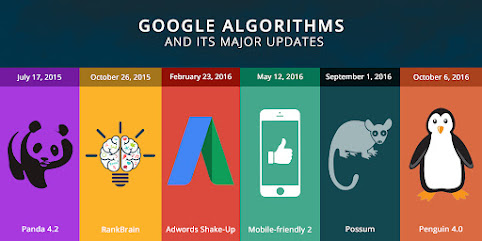SEO's Evolution across Time
Search engine optimization, or SEO. It is the process of driving traffic from the free, editorial, organic, or natural search engine results. It is the term used to describe the activity intended to raise search engine rankings. It is essentially quality control for websites in many ways. One of the most well-known search engines is Google.
HISTORY OF SEO
This was created by two students as their university project in 1998. This was initially utilised as the domain for their university website's collage search. Within 24 hours or longer, the search results were sent to the provided email address. By 2000, internet usage was widespread throughout the world. Al-Qaeda attacked the World Trade Centre in America on September 11, 2001. For those searching for information about the attack at this time, Google was unable to produce any results. The fact that this incident involved the largest structure in the world at the time made Google uneasy. Officials from Google then scheduled a meeting to discuss the matter. The available webpages were not Google-crawlable, according to the issues raised by the engineers.
Therefore, engineers came up with a solution that they could only implement if the webmasters, or the people responsible for maintaining a specific website, assisted them in optimising the documents. As a result, they were given guidelines on best practices for optimization, which can significantly improve results. The engineers expressed concern over this because it pertains to their personal Google data. Finally, with no other options, a 32 page "SEO Starters Guide" featuring fundamental SEO techniques was created. Search engine optimization therefore got underway. The steps in the use of search engines are: A computer known as a bot scans a newly created or updated page through a process known as crawling. According to their classifications, the database will preserve the screenshot of that page. Caching is the term for this saving mechanism. Indexing is the process of retrieving the results of a search.
SEO EVOLUTION
Google used content-specific or niche-specific search terms in the early stages of its evolution. This technique was used to rank the online sites, and the more times a keyword appeared on a web page, the higher it would appear in search results. In order to boost a webpage's rating, the Keyword Stuffing approach was applied, which is also a Black Hat SEO strategy (unethical activity) when there is an unwarranted overuse of a keyword. This also goes by the name Key Word Meta Tag. A Google algorithm modification was made in relation to this scenario, making links more important than content on web pages for ranking. This will rank who is recommending and getting the most links to websites. Each link will be treated as a recommendation, and the websites to which it leads will be given preference. To preserve the caliber of the content, it was changed to quality link particular. The problem with this scenario was that the website owners began to sell the links to webmasters who were seeking the same links for ranking.
Consequently, a Page Rank rating out of 10 was developed in order to improve the quality of links. The ranking mechanism was then turned off or made invisible to the audience. Having a high page ranking indicates that a website is trustworthy. Google last evaluated the page ranking in 2013. Along with the linkages, other aspects were taken into account. High-page-ranking websites began to sell connections to webmasters, and Google responded by introducing a new strategy known as "passing the juice." High page ranking websites will see a decline in their page ranking if they sell links to webmasters. In the field of SEO, the term "link juice" is used to describe the value or equity that is transferred from one page to another. Hyperlinks transmit this value along. The links are seen by search engines as endorsements from other websites that the page is worthwhile and deserving of promotion. Additionally, Google proposed "no follow attribution," which halted the passing of equity.
Google launched Google AdWords on October 23, 2000, and later renamed it Google Ad or PPC (Pay Per Click), a tool that allows businesses to advertise by displaying advertisements in Google for commercial purposes. Google launched AdSense as a substitute in 2003. AdSense is a means for websites to make money by displaying advertising from advertisers that wish to market their business or products. This could have an impact on the website's keywords, which will have an impact on visitors, which could result in a decline in Google revenue. Personalized search results and Google Suggests auto suggestions were introduced in 2009. Google started communicating with its users. Even user engagement has evolved into one of Google's ranking factors. Google views visitors who subscribe to a website as having a high level of trust in it. Pogo sticking is a technique that was first described in Moz.com. It occurs when a user visits a website for no longer than 3,4 seconds before clicking on the second result in the search results. If the user spends more time on the second page, Google will deem it to be more informative and will give the second page a higher ranking. A visitor who clicks a webpage and leaves after less than 2,3 seconds is said to have a high bounce rate. The ranking and trust value of the website will decline if the bounce rate is higher. Because Google receives a notification when a visitor clicks a webpage, internet problems can also raise bounce rates. For this reason, a website should load quickly in order to prevent this from happening. Google became more than just a search engine, and Google Assistant became everyone's voice assistant.
Because social media had such a big impact on society and because Google began to rank websites based on their interactions on social media, social media signal became particularly significant in 2010. Social media sites like Facebook, Orkut, and Instagram contributed to the rise in ranking. The influence of social media also played a significant part since, when a post is published on a social media platform and influential people interact with one another there, the webpage will rank higher as a result of the increased activity. That was the final phase of SEO development.


Comments
Post a Comment